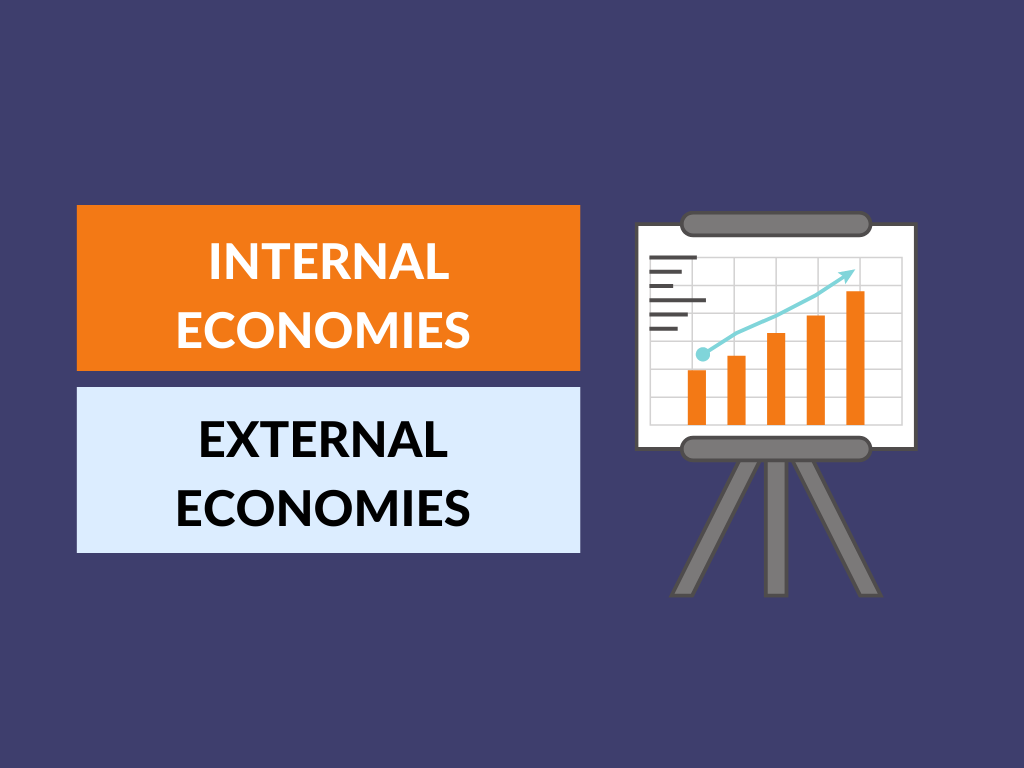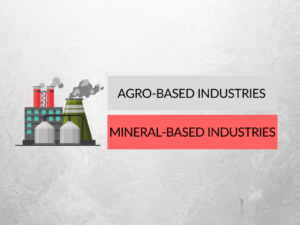When a company follows large scale production by increasing the production with the use of more capital and technology at the same time lowering the costs, it will gain certain advantages. These advantages which are gained by the companies are called as “Economies of Scale”.
Alfred Marshall in his theory ‘Law of returns to scale’ classified the advantages of large scale production as ‘Economies Of Scale’. He classified Economies of Scale achieved by the companies into two types, They are:
1. Internal Economies
2. External Economies
INTERNAL ECONOMIES
Internal Economies are the advantages which arise because of the development of the particular firm. Internal Economies are the economies which are related to the particular firm. The internal economies which are attained by the firm are again classified into different types based on their functions. They are as follows:
⦿ Technical Economies
⦿ Financial Economies
⦿ Marketing Economies
⦿ Managerial Economies
⦿ Risk bearing Economies
The detailed explanation of each of these Internal Economies is as follows
Technical Economies
The technical economies will arise due to the size of the firm. Usually, technical economies arise for large scale firms with large-scale production. The large scale firms can use modern machinery and get many advantages. The large scale firms don’t need much labour force due to the use of machines in the firm. The large scale firms can use the raw materials effectively and they use wastage of raw materials to produce subsidiary products.
Financial Economies
The Large-scale firms get financial assistance easily in the form of borrowings, loans, credits at a low rate of interest. The government and financial institutions like banks, insurance companies, private bankers, etc may come forward to provide the necessary capital to large scale firms because of the guarantee of repayment of loans by the large scale firms.
Marketing Economies
The large scale firms obtain economies of marketing. The large scale firms get raw materials at a cheaper rate because they purchase raw materials in a large quantity. The small scale firms cannot get these benefits because they purchase lesser quantities. These large scale firms also get benefits in the case of an increase in their demand for their products by advertising, promotions of their products. In aspects of selling and distributing the products, the large-scale firms get many benefits.
Managerial Economies
The Large-scale firms can manage their business more efficiently. These firms use various strategies to manage their workforce effectively. They can afford to recruit highly talented managers into their firm which helps the company to achieve greater levels of business. These firms divide the work into different processes and appoint various specialists to the work which results in more efficient and error free production.
Risk Bearing Economies
Large-scale firms have the greater ability to manage the business risks. If there are losses in one market they can withstand because of the wider markets which the company has. The large scale firms sell their products in many markets according to the customer preferences which helps them to enhance their brand value.
EXTERNAL ECONOMIES
External Economies are the advantages that occur if the number of firms in the industry increases. The entire firms in the industry are developed if the firms in the industry increase. All the firms in the industry gain certain advantages because of increase in firms, these are called as External Economies of Scale. The external economies which are secured by the firms are classified into different types based on their nature, They are:
⦿ Economies of Specialization
⦿ Economies of Concentration
⦿ Economies of Information
The detailed explanation of each of these External Economies is as follows
Economies of Specialization
Economies of Specialization occurs when the number of firms in the same industry is more. For example: If the textile industry is developed at one place, then it is possible for the companies to introduce a specialization in the production process. In this case, some firms may specialize in the production of cotton variety, some other firms may specialize in silk, jeans, etc because of this specialization of firms, the quality of the products will increase.
Economies of Concentration
Economies of concentration occur when many firms are situated in the same place. The concentration of industries leads to the development of transport facilities, financial institutions, financial facilities, subsidiary companies at the place where the firms are located. This will help the firms to grow more and work efficiently.
Economies of information
Economies of information is obtained if many firms are concentrated at one particular place. They can derive many benefits by jointly establishing the research. Institutions and can publish some trade and technical journal. The concentrated firms may also popularize the quality of products through jointly giving advertisements.
CONCLUSION
The above-given information mainly highlights the Economies of Scale and the benefits which the firms derive by attaining Economies of Scale.There is also a limit for Large Scale Production. If the size of the firm is increased beyond the certain limit, the firm may get diseconomies of scale instead of economies. Therefore the firm must maximize the economies and minimize the dis-economies to sustain in the business for long term.





